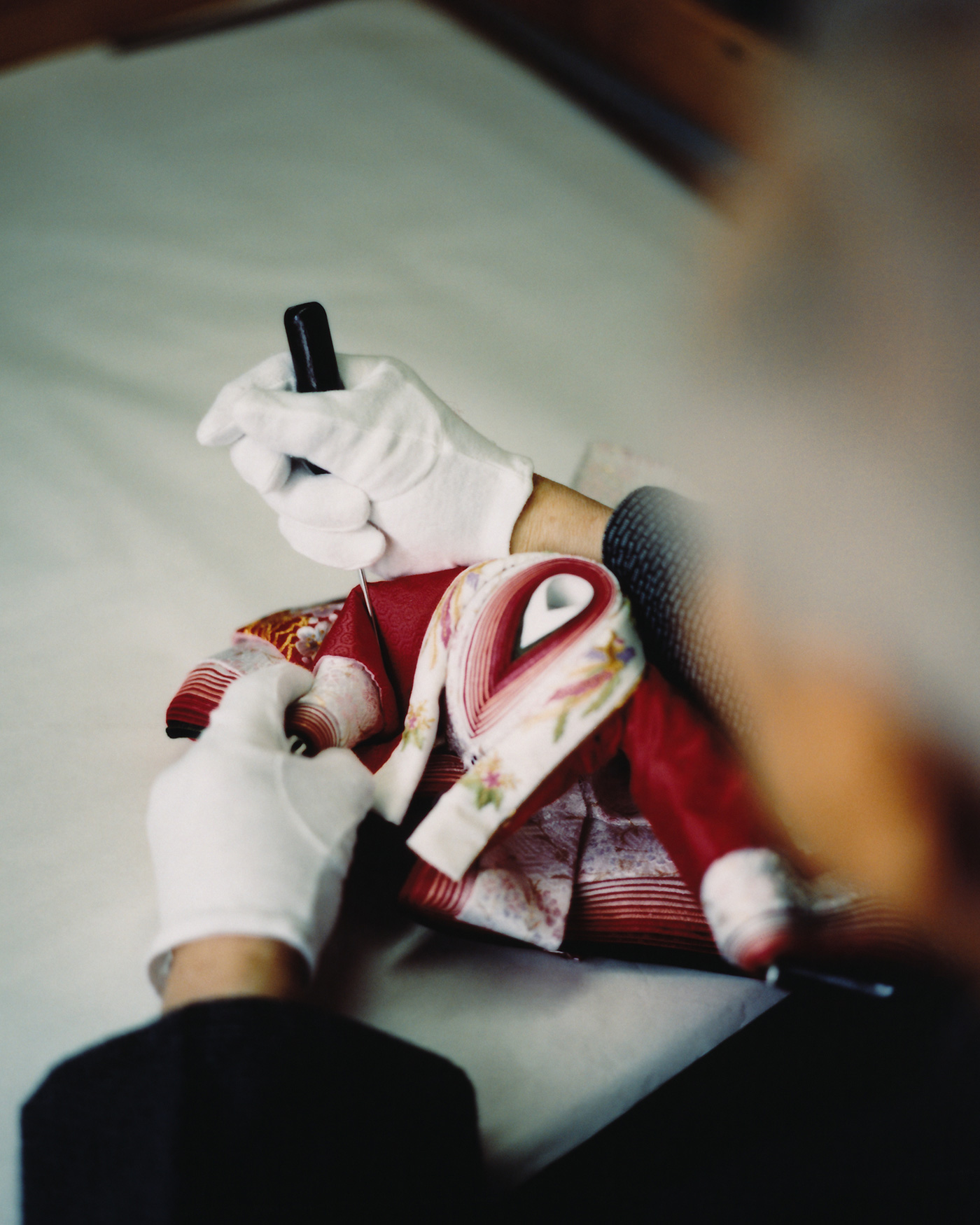What does creating a new product through this project mean to Ando Shoten?
Bonbori lanterns play a supporting role that is just one part of hina dolls. However, the traditional craft techniques of bonbori are our unique strength. To carry this these techniques forward for future artisans and for our company, I think we need to do something new. Nowadays there are hina dolls without bonbori, and the demand for hina dolls themselves is declining. I feel that the development of new markets is absolutely necessary to protect these techniques. We are grateful for the opportunity through this project to take on a challenge where the bonbori can be the lead character rather than a supporting role.

In your collaboration with designers, have there been any new technologies or changes in perspective?
We were surprised by the proposal we received Mr. Hirabayashi, a designer, for a stool and a flower base. We were fixated on the lighting industry, so the idea of using just a part of the hoya (glass part) or cutting out just a portion of the base impressed us.
At this point, there are many things about the European market that we need to study. First of all, we want to take on the challenge through this project.
Can you tell me about the technique used to make this product? Were there any difficulties?
This time, we used bent wood techniques to create a flower base, which was a big challenge for us. First, with a large size of 40 cm in diameter and about three times the normal number of honegi, we had to be creative with the bentwood part. We bent the heated wood and fixed it into grooves; doing so evenly is the skill of the craftsman. Because there are many honegi and it is finer than the usual bonbori lanterns we make, we went through many prototypes before we got close to the ideal shape.
For the stool, our technique was to smoothly cut the base of the bonbori with a lathe. Initially, it couldn’t withstand the weight and became distorted, but we repeated the prototype many times, thinking about whether to make the legs out of wood or use an iron design. We used Japanese beech for the stool, the same material used in bonbori, which was very easy to carve and showed off the beautiful wood grain.

What kind of material is used for the flower base?
We used hinoki, Japanese cypress. It is soft, has a beautiful grain, and smells good, making it easy to use, but actually, it’s a material that is rarely used for bonbori lanterns. Since bonbori are coated, the use of other woods is also possible. One of the features of this flower base is that we challenged ourselves to use a material we haven’t used much before. Also, following the designer’s intention to “use as much plain wood as possible,” the construction takes advantage of the material.
How long did it take from the initial idea to completion?
It took about six months. We made prototypes from small parts, and made four prototypes each for the stool and flower base that were close to the finished product.
Usually, we ask skilled traditional craftsmen to make new products, but this time we wanted “new craftsmen to have dreams,” so we built them together with young craftsmen in their 30s and 40s. Having them take on something big for the first time, saying “let’s build it together,” I think was a good experience. Of course, we proceeded with guidance from skilled craftsmen and advice from our president, the only traditional craftsman of bonbori lanterns.

What is your vision for the passing on these techniques in the future?
To leave bonbori for the next generation, we want to create products that suit the times and modern needs while preserving the techniques of the craft. Well, we’re unlikely to have a huge success with the former, but I think it’s important to keep at it. We tend to create products that hew to traditional culture, but I think it’s essential to create practical products that can be used in everyday life, and products where bonbori lanterns play the lead role.

In a world where mechanization is advancing, what value does handcrafting objects hold for Ando Shoten?
Our strength is our ability to repair bonbori lanterns made 100 years ago. We take pride in the fact that we’ve been able to preserve this tradition because we have the necessary techniques to renew old, handcrafted items. While leveraging those techniques, we want to continue making bonbori by hand, products that other companies cannot create.
For example, between the wooden frames that form the mold of a bonbori, the gaps may vary slightly since the frames are made by hand. It thus becomes necessary to cut the paper and stretch the washi accordingly, something that machines cannot do. We believe that the fact that traditional bonbori lanterns can only be made by hand is also a strength.

What kind of people would you like to see using such items that have taken a long time to create?
We have continued to make products that hew closely to traditional Japanese culture. There is a fundamental premise that we want to cherish these techniques and methods. Among them, I think the designs we challenged ourselves with this time are simple items that can be used on a daily basis. I’ve also heard stories from Germany about furniture passed down from grandfather’s time being repaired and used for many years. It would be nice if our products became everyday items that “are loved and used for a long time, repaired as needed, and can be passed on to our grandchildren.”







